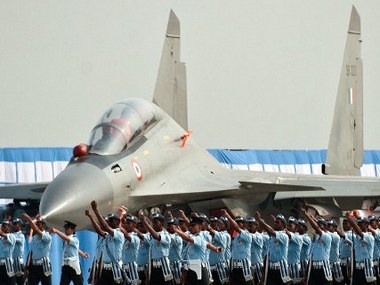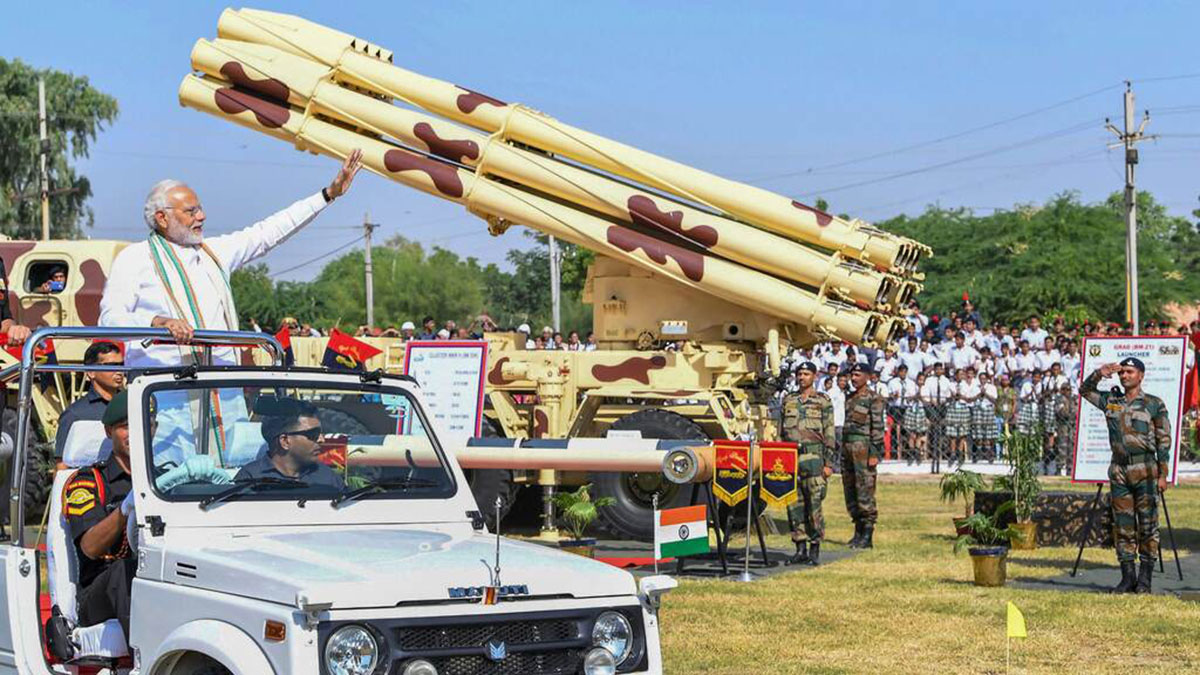The government’s announcement of 100 percent FDI in defence via government approval route, as reported by CNBC-TV 18, post a high level meeting chaired by Prime Minister Narendra Modi on Monday, will be a big boost for the ‘Make in India’ campaign. With this and relaxation of FDI in other sectors, India has truly become the most open and lucrative economy for FDI in the world. Just this March, Airbus had said that while the group wanted to invest Rs 5,000 crore in India, generating some 10,000 jobs, investments would not kick off till projects are cleared.
On the defence side too, Airbus India chief said there would be no investments if there is no contract, adding that Airbus plans to procure equipment worth $2 billion from India on the commercial side of business. On the defence side, Airbus is keen to replicate joint development and manufacturing model as in other countries but “49 percent holding curb wouldn’t encourage the big companies to come to India”.
FDI in the Defence was hiked from erstwhile 26 percent to 49 percent while announcing the Defence Budget for Financial Year 2014-2015. The increase was definitely warranted but such hike was just half the story without fully analysing the reasons why 26 percent FDI limit had barely attracted less than $5 million FDI in defence in last 14 years; mere 4.94 percent.
Without going into these reasons and addressing those critical issues, nothing much was likely to be achieved with the hiked limit of FDI. The 49 percent FDI limit was kept perhaps to retain control but the question is whose control? Is it the MoD-DRDO- PSUs control, the combination of which over decades has ensured we continue to import 70 percent of our defence needs? One example of the ground reality was reflected in the 2011 letter addressed to the then Prime Minister by Manibhai Naik, CEO of L&T that said, “Defence Production (MoD) Joint Secretaries and Secretaries of Defence Ministry are on the Boards of all PSUs — sickest of sick units you can think of who cannot take out one conventional submarine in 15 years now with the result that the gap is widening between us and China and bulk of the time we resort to imports out of no choice. The defence industry which could have really flowered around very high technological development and taken India to the next and next level of technological achievement and excellence is not happening.”
Of the three things holding back indigenous defence manufacture in the country, two constituted the defence procurement procedure (DPP) and the FDI, third one being the red tape. On 8 June 2016, MoD uploaded a comprehensive DPP 2016 on its website albeit without the chapter on ‘Strategic Partners’ and the policy on blacklisting of firms, which are yet to be issued. The Dhirendra Singh Committee had spelt out guidelines for choosing strategic partners. This is a decision awaited by the private industry with much apprehension as how level the playing field would be.
Of course, no matter how good or bad DPP 2016 may be, it is the implementation in letter and spirit that is going to matter. The second major issue was the 49 percent FDI limit in defence. 49 percent FDI would not have worked because when you have a glut in technology and critical voids then you need to import technology. Then is the question whether we would get state-of-the-art technology; which depends on how we leverage our strategic and defence partnerships but this certainly warrants FDI far greater than 49 percent.
Sure FDI inflows into the country increased to $55.46 billion in 2015-2016 as against $36.04 billion during 2013-2014, which is the highest in any financial year. But the point to note is that FDI in defence with the aggressive push for ‘Make in India’ failed to attract foreign investors, totaling to just Rs 56 lakh in the previous year. Immediately post the Prime Minister’s call for ‘Make in India, Sell Anywhere’ and hiking of the FDI in defence sector to 49 percent, Ulrich Grillo, President, Federation of German Industries having met our Defence Minister, told reporters that German Industries would not like to invest in India since with 49 percent FDI they would not have control over selling the products.
It is for this reason that the Department of Industrial Policy and Promotion (DIPP) of the Ministry of Commerce and Industry had been recommending past several years 74 percent FDI in case of transfer of technology (ToT) in cutting-edge and 100 percent FDI in case of state-of-the-art technology recommendations obviously made after thorough study and analysis.
Defining the DPP 2016 and hiking the FDI in defence to 100 percent in quick succession certainly are excellent developments for which the government deserves kudos. The third issue of dispensing the red tape, however, is equally important. Take the Fast Track Procedure (FTP) in DPP 2016, which needs to be matched on ground; how do you reconcile to the Defence Minister announcing ‘emergent’ procurement of 50,000 bullet proof jackets in 2014 which have still not been provisioned despite army’s deficiency having gone up beyond 3,50,000.
Significantly, while hike in FDI to 49 percent was announced, FDI beyond 49 percent was also approved on case to case basis where state-of- the-art equipment was involved. But the MoD is yet to define what it meant by “state-of-the-art”, because of which all cases of FDI in defence beyond 49 percent are stuck with the Foreign Investment Promotion Board (FIPB). This is yet another example of red tape, which needs to be drastically pruned.
100% FDI in defence will be a big boost for ‘Make in India’ in defence. The push for state-of-the-art defence equipment indigenization is vital with current military equipment holding being obsolete to the tune of some 50 percent. The proportion of state-of-the-art equipment needs to grow from its current level of 15 percent to at least 30 percent with the current cycle including acquisitions drafted under the long-term integrated perspective plan (LTIPP), which is expected to include procurements worth $100 billion by 2022. So lots of R&D and hard work is warranted. Defence exports too should go up exponentially. What needs to be ensured is that critical equipping voids of the military must be addressed on priority and in the euphoria of big ticket projects we do not ignore or accord lower priority to the cutting edge.
(The author is a veteran Lieutenant General.)


)




)
)
)
)
)
)
)
)